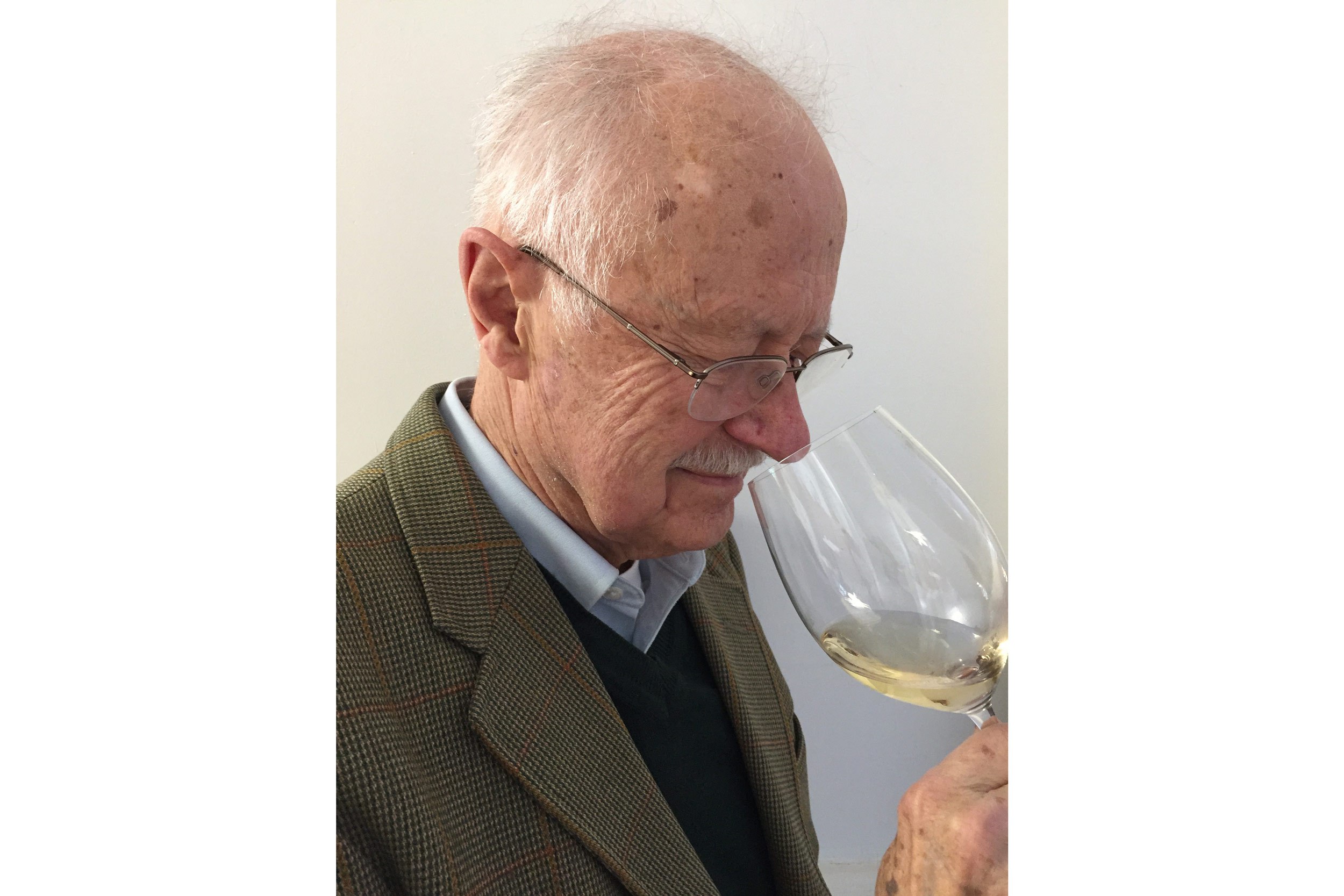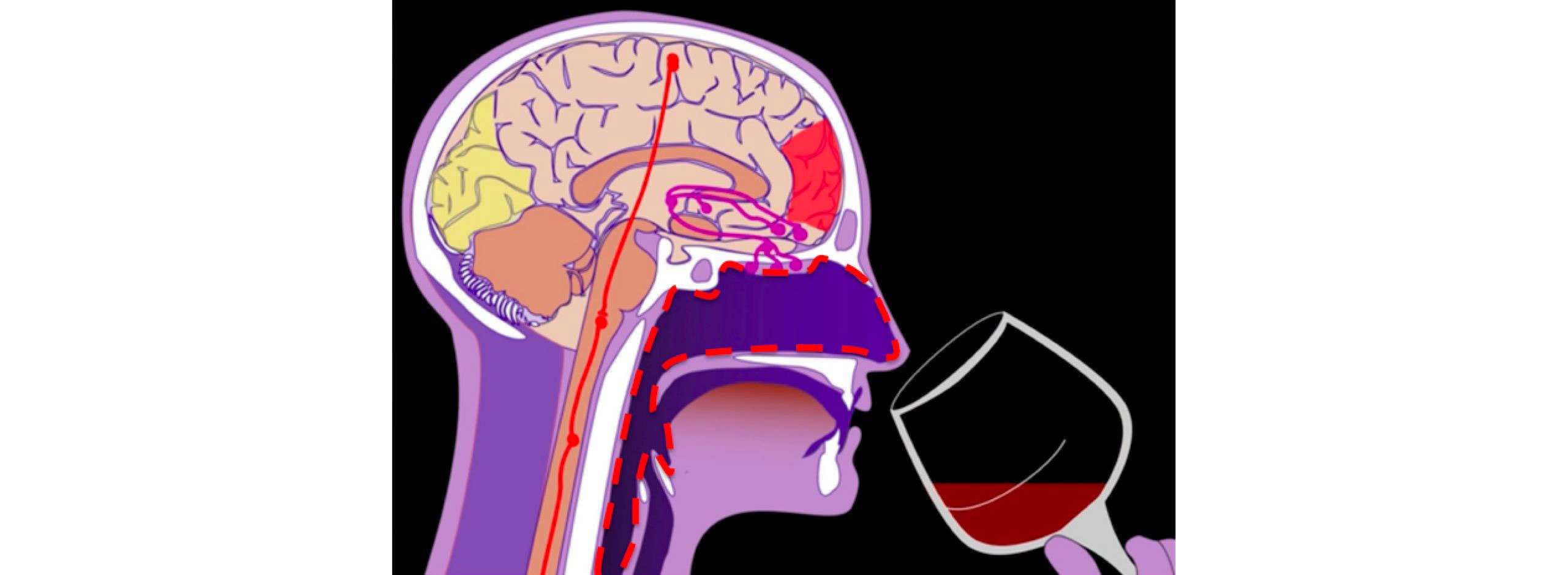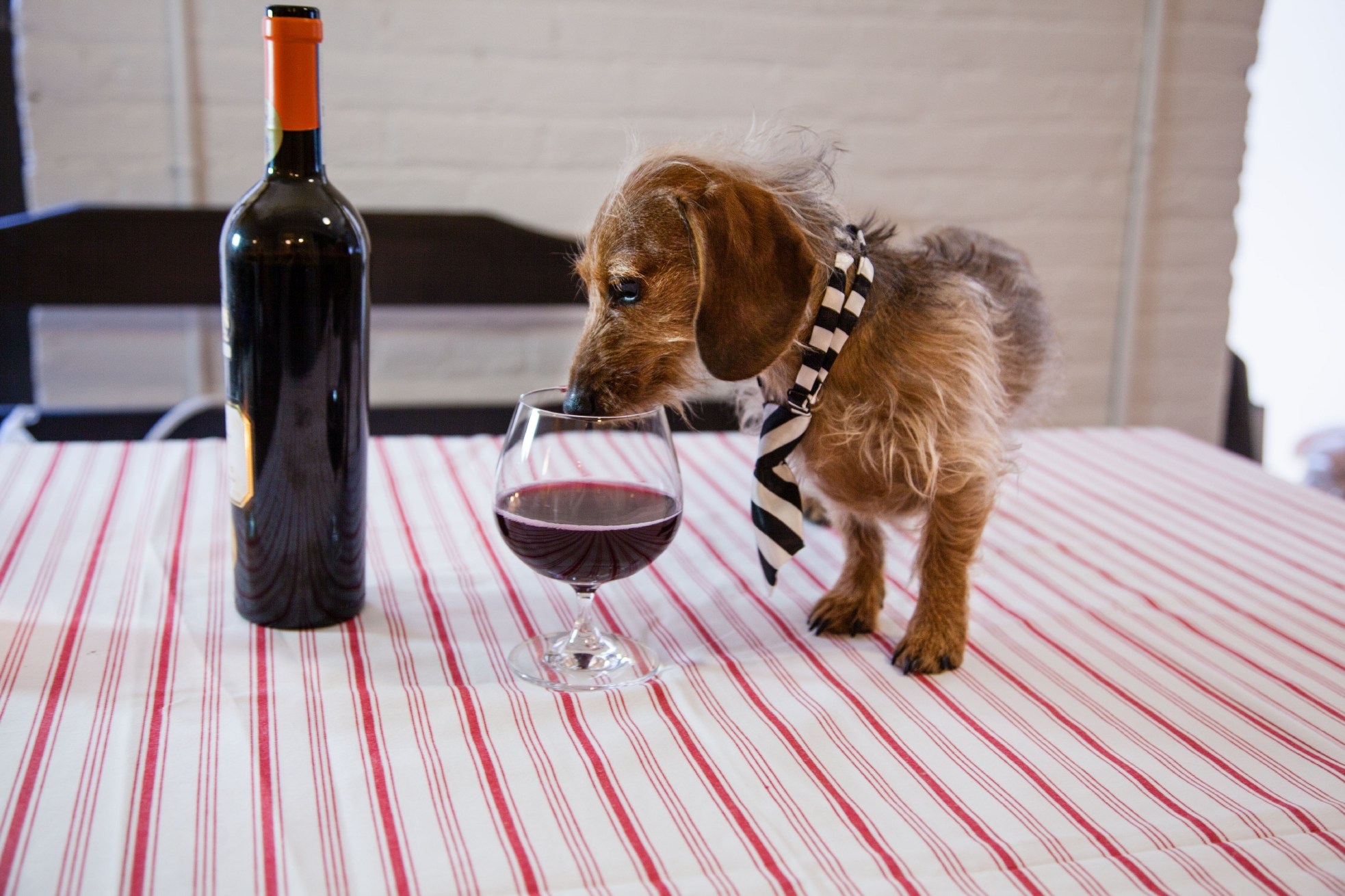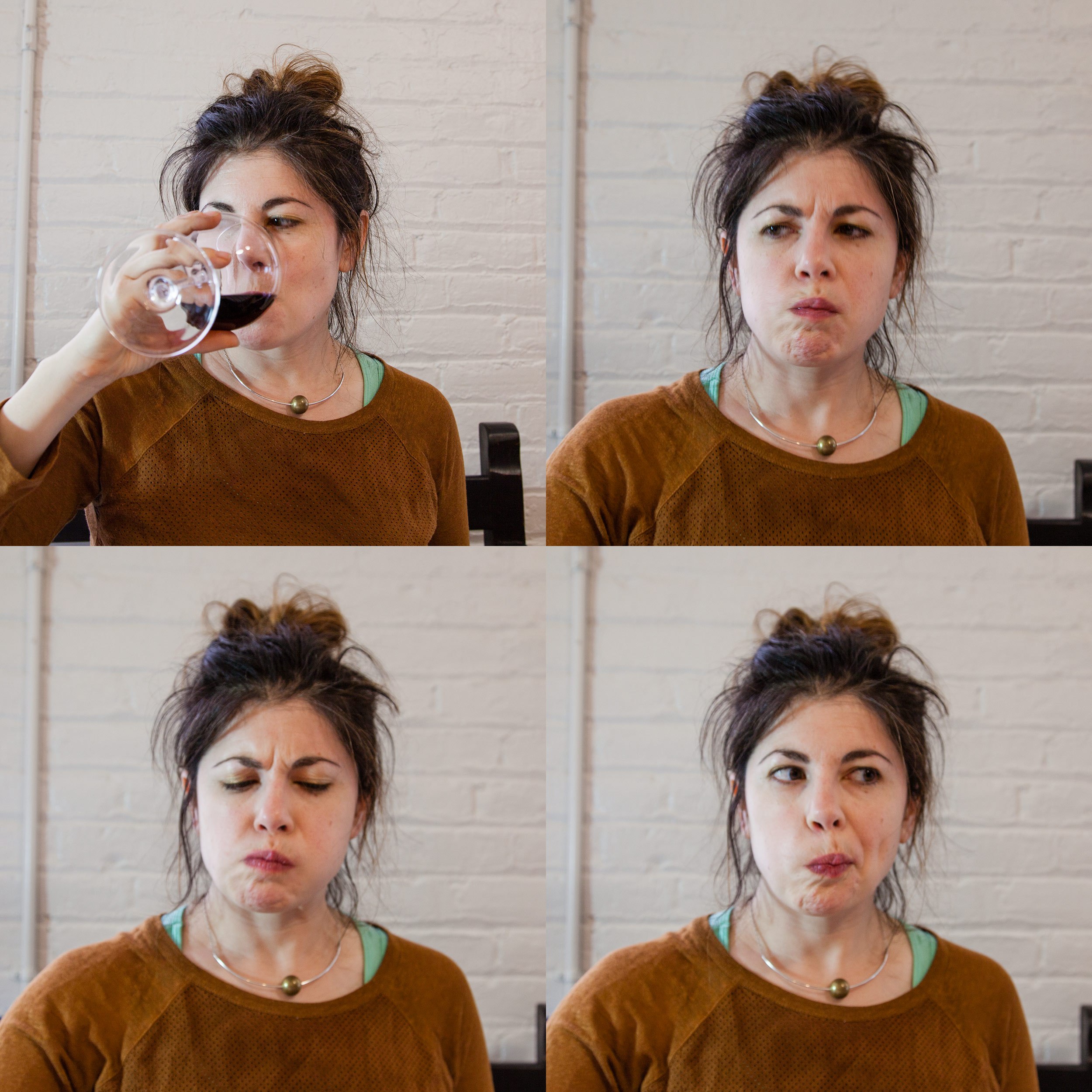I traveled to New Haven, Connecticut on a recent chilly afternoon to learn how to drink wine like a neuroscientist.
I met Gordon Shepherd and Dana Small in a small library at the end of a corridor of laboratories and seminar rooms at the Yale School of Medicine, where both teach and conduct research. Shepherd, avuncular, with a white moustache and rimless glasses, has done pioneering work in the neuroscience of olfaction and flavor perception. Small, a spritely redhead, is a rising star in neuropsychiatry; her work probes the neural relationships between flavor and appetite.
I came prepared with two bottles I picked up at my neighborhood wine shop in Brooklyn: a 2012 Domaine des Deux Anes Fontanilles, a “natural” red from the Languedoc, in the South of France, and a 2014 Haden Fig Chardonnay, from Oregon. As we chewed on mouthfuls of wine—more on that in a moment—we discussed some of the scientific findings featured in Shepherd’s latest book, Neuroenology: How the Brain Creates the Taste of Wine, a slender but densely packed volume that offers a sort of zoomed-in version of his celebrated 2012 tome, Neurogastronomy: How the Brain Creates Flavor and Why It Matters.
Neuroenology is joined on the growing science-of-wine shelf by I Taste Red: The Science of Tasting Wine, by Jamie Goode, a British wine journalist and critic (albeit one with a Ph.D. in plant biology). Both books promise a new approach to optimizing our wine-drinking experiences.
The traditional road to wine appreciation goes through the vineyard, the cellar, and the bottle. I remember, years ago, making a close study of the poster of De Long’s Wine Grape Varietal Table that hung in a friend’s apartment, mouthing its excellent and mysterious names: xynomavro, falanghina, tannat. (Where are all the hipster babies named after grapes?) I was attracted to the seeming vastness of the wine universe, to its distinct geographies, terminologies, and variegated lore. But at a certain point, keeping track of the wines I consumed—where they were from and what I’d found in them—began to feel like busywork, more about information management than connoisseurship. It was a feeling exacerbated by my uncertainty about whether my amateurish tasting notes corresponded to what was truly there to be tasted, or just pretensions masking my deficient and uneducable palate. The ritualized practices of serious wine snobs—the swirl, the sniff—can leave ordinary wine lovers wondering whether they are missing something. “Am I just not any good at this?”
Neuroenology and I Taste Red both make the case that wine appreciation begins not with the bottle, but in your head. You’ll find hardly a word about terroir in these books; no talk of appellations or vintages. Instead, both books suggest that we can learn about wine by getting to know more about ourselves—specifically, about the ways that our bodies and brains transform the “chemical soup” (in Goode’s words) of wine into the full experience of flavor. Both books propose that a deeper understanding of the relationship between sensation, perception, and cognition can not only enhance our ability to appreciate wine, but intensify our pleasure in it.

THE FLAVOR ILLUSION
The first thing to know is that the experience of wine involves multiple senses. In other words, the flavor of wine is not just taste plus smell, but also includes vision, hearing, and a complex set of tactile feelings—what Shepherd calls somatosensations—inside the mouth, where a range of sensory receptors register texture, temperature, astringency, viscosity, unctuousness, and more. Our brains integrate these different types of sensory signals into the total experience that we call flavor. Analytically, we can disentangle some of these threads—gauging the shade of the wine in the glass, naming its aromatic notes. But, as both Shepherd and Goode emphasize, the relationship among the sensations is also synergistic: different sensory qualities intensify, enhance, and suppress each other in ways that cannot easily be unwound, and which often have as much to do with culture (i.e., learned behavior) as with innate biology. The aroma of vanilla, for instance, increases perceptions of sweetness even when sugar levels are unchanged, perhaps because we associate it with sweet desserts.
Many of us have heard some version of the experiment, conducted by cognitive psychologist Frederic Brochet and colleagues in 2001, in which a group of experienced wine tasters were given two glasses of the same white wine, one tinted red with food coloring, and asked to describe their aromas. Their responses not only suggested that they believed the two to be different, but that they mistook the false red for a real one.
This is the kind of scientific study that gets loaded with a moral as it passes into popular lore: in this case, the experiment seems to prove the fallibility of so-called experts (and isn’t it delightful to show up those snoots as pretenders?). But it might be better to think of these experts not as “bad tasters,” who were “wrong,” but as humans demonstrating a feature of our sophisticated perceptual systems, which must constantly make sense of a world teeming with sensory information and interpretive possibilities. The wine is red, after all, albeit by atypical means, and it’s perfectly reasonable for our brains to factor that information in.
It’s not just what’s in the glass that affects what we taste. When we drink, we are taking in not only the wine, but the world around it. The hue of the light, the temperature of the room, the soundtrack on the restaurant stereo—all of these things have been shown to influence our perceptions and our judgments. Goode reports gleefully on the latest research into crossmodal effects (i.e., the multifarious interactions between our senses), including the work of Oxford University’s Charles Spence and Ophelia Deroy, whose investigations have found, among other things, that listening to Mozart’s Flute Quartet in D Major while sipping enhances drinkers’ self-reported enjoyment of Pouilly-Fumé, a dry sauvignon blanc from the Loire Valley.
Although seemingly superficial, results like these are anything but inconsequential. They reveal, according to scientists, the neurological rules by which our brains edit our experience to create a coherent account of reality.
COMING IN THROUGH THE BACK DOOR: RETRONASAL OLFACTION
Although all of the senses play a part in wine appreciation, one has a starring role: smell. The flavor hero in our heads is the olfactory epithelium, an exquisitely sensitive set of about 400 different types of receptors lining the dome of the nasal cavity, which respond to volatile chemicals in the air, producing the experience of odor.
There are two ways into this chamber. The first is orthonasal olfaction—sniffing the air as it enters through the nostrils. Then there’s the back door: retronasal olfaction, where exhaled breath mixes with the intimate aromas of foods already in the mouth, and with saliva. These two paths serve distinct purposes, and in fact, carry different kinds of information. Like vision and hearing, orthonasal olfaction is a sense for sampling the external environment. Retronasal olfaction is an intimate sense, registering the internal environment of the body, while also actively and inextricably commingling the aromas of, in this case, a glass of wine with its taste and assorted somatosensory qualities.

In New Haven, before we got down to drinking, Dana Small produced a tiny container of jelly beans for a bit of empirical self-experimentation. It will probably come as no surprise that, when you hold your nose, a jelly bean is a sad little morsel, cloying, gummy, and gritty, with negligible redeeming value as food. What was surprising was how quickly, upon un-pinching my nose, the flavor rushed in: almost immediately, my mouth filled with the familiar sweet-musky-diacetyl-funkiness of “buttered popcorn.” The unfortunate taste of the jelly bean had blossomed into a tolerable flavor.
Small explains that, even though a major element of flavor is sensed in an entirely different region within our heads, our neural circuitry may contribute to the conviction—apparently, unique to primates—that flavor comes from our mouth. (This phenomenon is known as the capture illusion.) In humans and other primates, sensory signals relating to taste and smell are bundled together at the first brainstem relay. This bundle goes straight to the interpretive, higher-order regions of the brain (where flavor is identified), before passing directly to other brain areas, such as the hypothalamus and amygdala, which regulate appetite and eating behavior, says Small.
In rodents, signals from the mouth and olfactory center remain segregated through multiple levels of brain processing; this correlates with experiments showing that nutritional value, not flavor, is the primary way that rats determine whether a food is good to eat or not. In comparison, our cravings are disproportionately shaped by our immediate sensual experience of eating. For Small, this is important evidence of the primary evolutionary role that flavor has played in human development—and a possible explanation for the negative consequences that the addictively “hyperpalatable” processed food of modernity has had on health.
Shepherd agrees. The central role of retronasal olfaction proves that our bodies are highly adapted for the purpose of appreciating flavor. He explains this by way of comparison with that champion sniffer, the dog. Dogs are more sensitive than we are to a wider range of odors, and better at discriminating between them. Their long and narrow snouts are excellent for orthonasal smelling, extracting chemical clues from the atmosphere sniff by sniff. But when it comes to more intimate delights of retronasal olfaction, dogs’ heads don’t seem to be built for it.
“When you see them eat,” Shepherd explains, “they quite literally wolf their food down. You don’t see them sample a little bit and smile, and say mmm-mmm, and so forth.” Canine civilization, it seems, will never produce a Robert Parker nor a Jancis Robinson. (To be clear, it’s probably not a good idea to give wine to a dog.)

Our olfactory world presents us with complex mixtures of different molecules. Neuroscientists now believe that these amalgamated mixtures produce a sort of hidden pattern in the brain — what Shepherd calls an aroma image and Goode refers to as a smell object. The cognitive process of interpreting and learning to recognize these patterns draws on information from our other senses—the tastes and textures that the volatiles are often encountered with—as well as how it makes us feel and how much we like it.
Our ability to distinguish one odor from another, then, is probably more like our capacity to tell faces apart than it is to judge the pitch of a sound or the saltiness of a soup. Shepherd explains, “In a roomful of grandmothers, you can pick out your own grandmother,” not on the basis of any particular feature (her twinkling eyes, her beaky nose), but on a sort of total impression.
It’s not so much skill, but familiarity that matters most. Repeated practice builds the associative relationships that constitute aroma images. So there you have it. Science confirms that one of the best ways to get better at tasting wine is . . . to drink more wine.
GIVE YOUR MOUTH A FLAVOR WORKOUT
In Neuroenology, Shepherd presents wine drinking as an active, muscular experience; he compares it, more than once, to playing tennis. The first third of his book comprises an exceptionally detailed account of sipping and swallowing, based in part on his laboratory’s ongoing research into the fluid dynamics of food and odors as they move through the oral cavity. Reading it, I found myself thinking about parts of my body I had hardly been aware of: obscure flaps and valves in the mouth and throat, the various muscles of the tongue and jaw.
During our afternoon wine tasting, he takes us through his practical steps to ensure that we are getting as much sensory information as possible from each glass. We begin our tasting of the two wines I brought with an examination of color and odor. (“Sniffing strategy is a critical element in wine tasting,” Shepherd writes in his book. “A professional wine taster controls sniffing like a professional tennis player controls ground strokes.”) Shepherd recommends rapid, shallow sniffs as the best way to get a mix of both high- and low-vapor-pressure molecules—that is, both the readily volatile compounds and the more reluctant ones.
After this prelude, it is time to get to the drinking. First, don’t gulp; just a small amount, one to three teaspoons, is enough for the initial sip, he says. The chemistry of the wine, and its perceptible qualities, changes when it is inside your mouth, as it heats up and mixes with enzyme-rich saliva. Holding this small, first sip for a moment near the front of your mouth—he demonstrates, chin slightly down—gives you the purest sample of the wine’s volatile matrix before it begins reacting with saliva. Keeping your chin low keeps the retronasal highway clear.
The next step is to put the muscular arsenal of the tongue, cheeks, and jaws to work, vigorously chewing the wine to move it around the oral cavity. Although it may seem counterintuitive to gnaw on a mouthful of liquid wine as though it were a bite of tough steak, this practice is customary among professional wine tasters, and there is plenty of science to back it up. First, it makes more sensory information (about a wine’s dry, grippy astringency or full-bodied silkiness, for instance) available to your textural sensors, while the churn of liquid releases more volatiles into the mouth’s inner atmosphere. Chewing also helps keep your palate lifted while the wine is in your mouth, maximizing the retronasal availability of those compounds.
Another traditional wine tasting technique is the calculated slurp, coating the mouth’s surfaces with a thin film of liquid. Shepherd and I both try this with a sip the Domaine des Deux Anes, neither of us very successfully; I get a nose full of wine, which does nothing for my appreciation of its funky rosemary and prune-plum aromas. “Obviously, one needs to practice,” pronounces Shepherd, sagely.
After you swallow, a thin sheen of wine coats your throat, making its volatiles available to the retronasal airstream. But, as Shepherd points out, at a wine tasting, you’re not supposed to swallow — that’s what the spit bucket is for. There’s a good reason for this, as the alcohol in wine not only addles your wits, it also dulls your sensory capacities. Yet, he says, “if you don’t swallow the wine, you don’t get it into the place where you get the most flavor.”
He offers a handy physiological fix. The epiglottis, the cartilaginous flap at the base of your tongue that snaps shut over your windpipe as you swallow, forms a sort of dimple at the top edge of your throat—anatomically, this is called the vallecula, or “little valley.” Shepherd suggests that you let some wine leak over the back of your tongue into the vallecula, where it can make its volatiles available to the retronasal gusts that will carry them up to the olfactory epithelium. Easier said than done (again, practice).
If (well, when) you do swallow, he instructs, “make sure you pay attention to the first time you breathe out.” This initial retronasal blast to the olfactory epithelium is known as the aroma burst, when the concentration of volatiles is at peak levels. Subsequent exhalations produce what is called in French, the longueur, the finish, a coda whose quality and duration is related to the chemical constitution of the wine as well as its interactions with one’s own body chemistry.

NAMING NAMES
While Shepherd proposes wine tasting as physical discipline, Goode’s prescription for wine appreciation is all about attitude and the right social atmosphere.
As we sip a wine, all kinds of factors shape what we taste and what we know, from the decor of the room to our own state of mind to our beliefs about the value of the bottle. Given all of this, how do we avoid the trap of subjectivity? Is the experience of wine only in our own minds, or can we find common ground with other drinkers?
As a wine critic and writer, Goode has thought in-depth on the question of communicating about wine. I Taste Red ends with a plunge through psychology, linguistics, and philosophy of wine, the relationship between subjectivity and objectivity, and the role played by language in the brain’s construction of reality. Language, he concludes, is a tool that can illuminate what we taste, but can also restrict and straitjacket our experiences.
He proposes a kind of Socratic method of wine drinking, approaching each glass open-endedly. “A good interviewer is mostly a listener rather than a talker,” he writes. “With wine, you ask good questions and give the wine the time it needs to answer.” We should measure our improvement as a wine drinker not by our improved “accuracy,” but by our increased enjoyment.
IT’S ALL IN YOUR HEAD
Consuming wine in this slow and gradual way, paying close and deliberate attention to how the wine travels around my mouth and down my throat, with an almost yogic focus on inflow and outflow of breath, I’m aware of the way that wine changes as I drink it.
The initial burn of the red blooms into something dank and almost pruny, and then, as it fades, similar to wet grass and earth. The Chardonnay starts off a bit sweet, then takes a turn for the acid, like a lemon fizz cut with hazelnuts.
The take-home message of both books is that the flavor of wine is not something that’s inside the bottle, that there is no “true” and incontrovertible flavor of a wine, no “real” flavor that exists outside of human perception. It comes from the individual taster and her engaged, attentive brain, mixed with immediate sensory information, memory, and anticipation. It is a dynamic quality, and both the wine and the drinker are changed by the interaction. The purpose of learning to taste wine is not to get wine “right,” but to get as much pleasure out of it as you can.
HOW TO DRINK WINE LIKE A NEUROSCIENTIST
Use all of your senses. Flavor is multisensory. Our brains weave together multiple inputs, not just taste and smell, to create the total experience of wine. When you drink, make sure you give your brain all the sensory information it craves by appreciating the look, feel, and sound of the wine as it pours and as it glitters in its goblet, as well as its tastes and aromas.
Chew your wine. Our mouths sense with more than just taste buds; they are lined with receptors that respond and register smoothness, astringency, pungency, and other qualities. Chewing on a mouthful of wine as though it were taffy maximizes sensory exposure, ensuring that you feel everything there is to feel. What’s more, the qualities of wine change while it’s in your mouth. Chewing can maximize the transformation.
Pay attention to your breath. It turns out that the same skills you hone on your yoga mat come in handy while sipping vino. Retronasal olfaction, which detects volatile molecules as they exit your body on your breath, plays a central role in flavor perception, so take note when you breathe out. The first time you exhale after swallowing, the wine volatiles coating your throat are at peak levels, producing an intense “aroma burst.” The aromatic character of the wine changes with each succeeding exhale, as the concentration of volatiles shifts, a phenomenon known as the finish, or longueur en bouche, of the wine.
Set the scene. If you’re a professional wine taster—someone who is supposed to taste accurately and analytically—you’ll want to drink under carefully controlled, lab-like conditions. But if your motive for drinking is pleasure, then you should consider shaping the environment to enhance pleasure. Crossmodal research has shown that our impressions of what we taste are strongly influenced by multisensory cues and contexts. So change the music on the soundtrack, add some mood lighting, drape the sofa in velvet. Does your orange wine taste different under a green light? Does the flavor change when you swap out your Marvin Gaye LP for Tupac, or for Debussy?
Drink often, and share. Our brains detect patterns, correspondences, conjunctions. Some neuroscientists believe that this sensory pattern-recognition is at the basis of our brain’s ability to recognize complex sensations. Drinking wine, and talking about what we experience with others, is the best way to build the kind of familiarity with wine that is the key to both pleasure and expertise.
Photography by Paul Adams.
